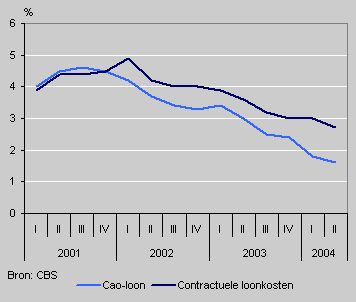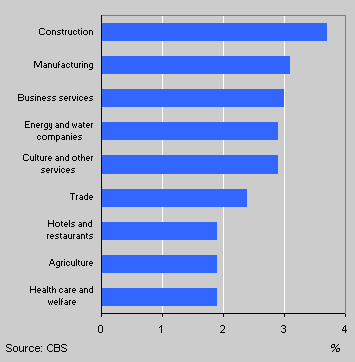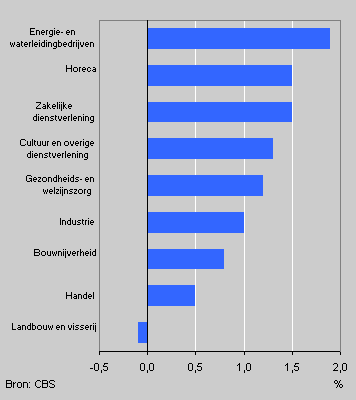Wage costs rise faster than wages

Contractual wage costs rose by 2.7 percent in the second quarter of this year. The increase in wage costs was 1.1 percent higher than the increase in collectively negotiated wages, which was 1.6 percent.
In 2002 and 2003, too, contractual wage costs rose faster than the wages negotiated under collective labour agreements. In 2003 contractual wage costs rose by 3.4 percent, while collectively agreed wages rose by 2.8 percent. In the first two quarters of 2004 the difference between the increase of wage costs and the increase in wages increased. This was mainly caused by higher employer-paid premiums for pensions and unemployment.
Collectively agreed wages and contractual wage costs

Negotiations still open in many sectors
The provisional indices for the second quarter of 2004 are based on 58 percent of the collective labour agreements. Those in the sectors transport and communication, financial institutions, public administration and education are not yet available. In these sectors the old agreements have mostly expired, and employer and employee representatives are still discussing the terms of the new agreements.
Largest rise in wage costs for construction
The construction sector reported the highest increase in wage costs in the second quarter: 3.7 percent. The smallest increases were in agriculture and fishery, hotels and restaurants and health care and welfare, all with an increase of 1.9 percent.
Increase in contractual wage costs, second quarter 2004

Wage increase also largest in construction
Collectively agreed wage levels rose by 1.6 percent in the second quarter of this year. This is the smallest increase since 1995. Collectively agreed wages exclusive of special payments rose by 1.7 percent in this period. The special payments remained nearly unchanged compared with twelve months previously.
Just as for the increase in wage costs, the increase in the collectively agreed wage level was also reported in the construction sector (2.9 percent) and the lowest in the hotel and restaurant sector (0.4 percent).
Increase in contractual wage costs minus increase in collectively agreed wage increase

Energy and water companies showed the largest difference between the contractual wage costs and the increase in the collectively agreed wages: 1.9 percent. Hotels and restaurants, and business services came second, both with a difference of 1.5 percent.
Nathalie Peltzer